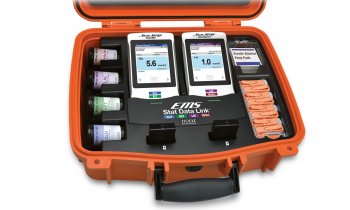Clinical activity based process-cost coupling
A tool for the development
of clinical pathways
Reimbursement for hospitals in Germany has undergone a complete change since the introduction of the German Diagnosis Related Group system (G-DRG).

Therefore hospitals need rigorous quality and cost control to survive with a fixed and externally defined income. Evidence-based guidelines and clinical pathways are helpful to achieve that goal, but key problems in their development are relevance for the individual patient and integration into clinical practice.
Aim: The objective is to develop a time-driven clinical activity (CA) system for process and cost control in a complex university department of medicine under G-DRG conditions, and to use it for the development of clinical pathways (CPs).
Methods: We have suggested an approach to process-cost coupling based on defined CA derived from procedures commonly used in internal medicine. We have further analysed components of such activities down to elementary processes and determined its respective staff costs and material consumption. Multidisciplinary teams conducted department-wide interviews, with intensive information and involvement of all employees. Processes were acquired by multidisciplinary teams and were mapped in MS Excel by a special template called STOP (Standardised and Optimised Processes). An activity-based instrument was programmed for sustained activity change management.
MS Excel is used to assemble all clinical activities applied to single patients in a particular clinical path (i.e. acute pancreatitis) on each day. 10-20 patients are then pooled and analysed for overlapping CAs. Pathway attributes are assembled in ARIS (IDS Scheer) and pathways modelled using common evidence-based guidelines. Visio software is used to visualise complex CPs.
Results: About 700 activities were defined, analysed and assessed for elementary processes. Human and material resources were measured, calculated or estimated by experts. Complete CA patterns of individual patients and patient clusters could be used efficiently to design evidence-based CPs. The CPs generated with this method reflected actual clinical practice and could be easily used to determine quality (adherence to CP) and costs (time-driven valued CAs).
Discussion: Contrary to common belief it was possible to define all elementary processes in a complex university department of medicine by this co-professional approach, including real costs. It was also possible to use common, practicable clinical entities, CAs. CPs could be composed of such CAs, and quality and accrued costs monitored at all times until discharge of the patient. This system will now be used to further model internal medicine processes, optimise quality and resources used, develop more clinical pathways and construct information technology tools to help in every day application and sustained adaptation to future changes of CA.
01.03.2006










